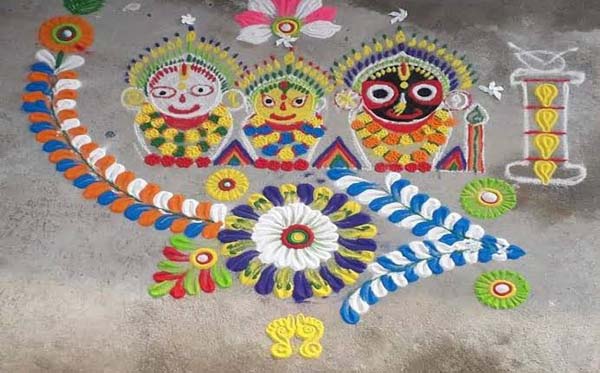In Odisha, the sacred decorative drawings in Hindu religion made on the ground are called jhodi chita and muruja. Jhodi Chita is made from thick liquid rice-powder (called ano in Odia) which becomes white after drying up. For drawing muruja, dry colors are used – rice powder for white, brick powder for red, turmeric for yellow and power of dry leaves for green.
Jhodi Chitas are made for decoration generally within the premises, on doors or in other parts of the house, while celebrating festivals, performing religious ceremonies, or worshipping Goddess Lakshmi. Special drawings are made in which the feet of Goddess Lakshmi and her sacred symbols, lotus, conch and fish are necessarily drawn. These pujas are offered on Thursdays of Agrahayana (November – December) or Thursdays of Magha (January – February).
Murujas are drawn between Sharad Purnima (October full moon day) and Kartik Purnima (November full moon day). In the month of Kartik, at the time of the worship of tulsi (sacred basil), a new muruja is drawn under the plant and this arrangement runs for the whole month. In these drawings the form Bhagwan Jagannath, widely worshiped in Bengal and Odisha, is always drawn. A portrait of Bhagavan Jagannath is also made and hung on the wall. In the month of Agrahayana, at the time of harvesting, murujas are drawn at the place of worship or near the granary.


